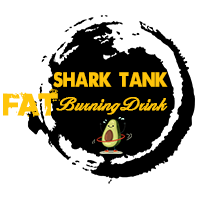
Dietary Fiber is Good For Weight Loss
“Eat more vegetables, eat more fruits”, you must have heard this phrase too many times, and the reason you surely understand is that these foods are rich in vitamins, minerals, and dietary fiber. Fiber is an important part of a healthy diet and plays an important role in keeping the body functioning properly.
In addition to preventing or relieving constipation, dietary fiber can help maintain a healthy weight and reduce the risk of diabetes, heart disease, and certain cancers. However, unlike other nutrients such as fat, protein, or carbohydrates, our bodies cannot digest and absorb fiber; it passes through the digestive tract and out of the body relatively intact.
Main Role Of Fiber
Dietary fiber is usually divided into two types: soluble and insoluble. Soluble dietary fiber dissolves in water in the digestive tract, forming a gel-like substance that slows down the rate at which the stomach digests food into the intestines, and it helps keep stools soft. Insoluble dietary fiber is insoluble in water and acts primarily as a filler, helping to form stool and move it through the intestinal tract while reducing intestinal pressure and promoting bowel movement to prevent constipation.
Proper dietary fiber can promote good health in many ways, including:
- Controlling weight
- Controlling and preventing high blood pressure
- Helping to balance blood cholesterol levels
- Regulating bowel movements and preventing hemorrhoids
- Regulating blood sugar
- Reduces the risk of colon cancer
- Reduces the risk of breast cancer
- Reduces the risk of diabetes
- Requires more chewing, which slows down your meals and helps digestion
- Regulates your body’s satiety signals, so you know when you’re full

Sources of Dietary Fiber
Most plant-based foods contain both types of fiber, but the ratio will vary.
Foods rich in soluble dietary fiber:
- Black beans
- Lima beans
- Brussels sprouts
- Avocado
- Sweet potatoes
- Potatoes
- Broccoli
- Turnips
- Pears
- Kidney beans
- Banana
- Figs
- Nectarine
- Apricot
- Carrot
- Apples
- Guava
- Flaxseed
- Chia seeds
- Sunflower seeds
- Hazelnuts
- Oats
Foods rich in insoluble dietary fiber:
- Wheat and wheat germ
- Oat bran
- Berries, including blackberries, blueberries, raspberries, strawberries, etc.
- Whole grains, especially barley, rye, sorghum, millet
- 100% whole wheat pasta
- Radishes
- Okra
- Spinach
- Coconut
- Cocoa
- Apple peel
- Pear Peel
- Raisins
- Dates
- Almonds
- Walnuts
- Passion fruit
- Popcorn
What Adverse Reactions Can Be Caused By Eating Too Much Fiber
Despite the many health benefits of dietary fiber, there are some side effects that can occur if you eat too much of it. And this is not uncommon, especially in people who eat a vegan and very low-carb diet.
- The main adverse effects include
- abdominal bloating
- abdominal pain
- nausea
- Stomach cramps
- Constipation or diarrhea
- Temporary weight gain
- Bowel obstruction (rare)
Excess fiber increases the size of the stool and makes bowel movements more difficult, which in turn can cause constipation. In addition, too much fiber can interfere with the body’s ability to absorb essential nutrients, including calcium, magnesium, zinc, and iron.

Which Dietary Fiber is More Helpful for Weight Loss
One of the utilities of fiber is to help with weight loss, and this effect is more pronounced with soluble fiber, especially for reducing belly fat. Belly fat is the most unhealthy fat, and it can greatly increase the risk of heart disease, type 2 diabetes, and other chronic diseases.
Eating more soluble fiber can help you lose belly fat:
- Soluble fiber dissolves in water to form a gel-like substance that slows stomach emptying and prolongs the feeling of satiety. It also helps slow down the rate of sugar entering the bloodstream and can maintain a stable post-meal blood sugar level, thus helping to improve insulin sensitivity.
- Although our bodies cannot digest and absorb soluble fiber, it is broken down by specific enzymes in intestinal bacteria and acts as a prebiotic, providing nutrients to beneficial bacteria. This process of digesting and breaking down soluble fiber is called fermentation, and it produces a short-chain fatty acid that can help reduce abdominal fat. This fatty acid helps regulate fat metabolism, such as increasing the rate of fat burning or reducing the storage of fat.
- Soluble fiber is a powerful natural appetite suppressant, it can regulate the hormones that control appetite. Some studies have found that the consumption of soluble fiber can reduce the level of hunger hormones produced by the body and increase the production of intestinal insulin skin, which affects appetite.
